Another couple weeks have flown by! As we get closer and closer to the end of term, we are feeling a bit anxious about the work expected of us not only in LFS 350, but in other courses as well. Although times are stressful, our group is maintaining unity and a positive attitude because we know that together we will be able to not only get everything done, but feel proud about our finished work.
Weekly Objectives
- Complete 3rd and final observations and interviews (week of Nov 14-18)
- Generate graphs/visual representations of our data to compare to other rounds of observations; come up with final summarized results
- Begin infographic/final report
Weekly Achievements
- Completed 2nd observation
(combines data from Oct. 21st & Oct. 26th) - Utilized consent forms for 2nd set of interviews
- Placed new decals on the food scraps, mixed containers and mixed paper bins
- Completed ‘Moments of Significance’ graphs (see below)
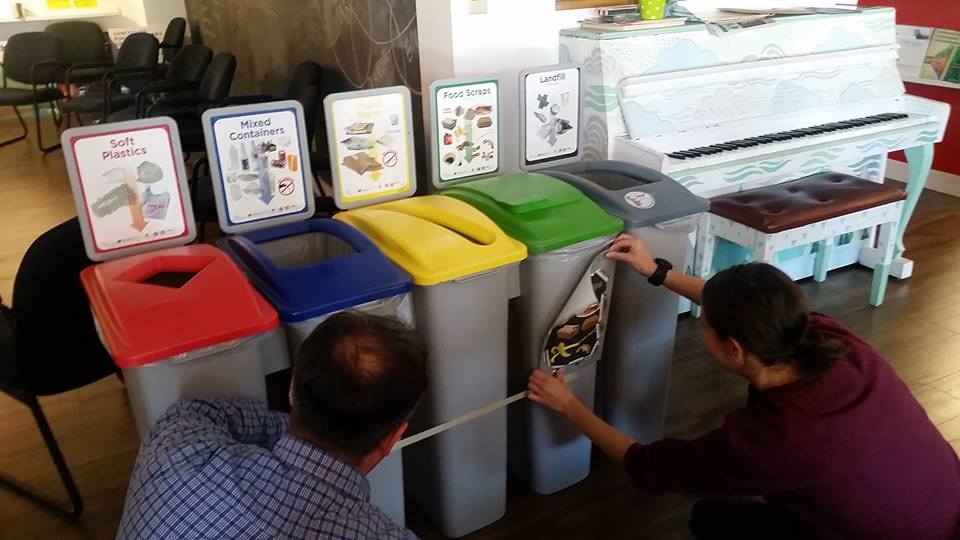
Paul teaching Sandra how to place the decals on the bins
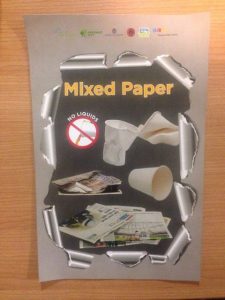
Mixed Paper Decal
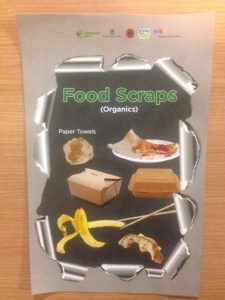
Food Scraps Decal
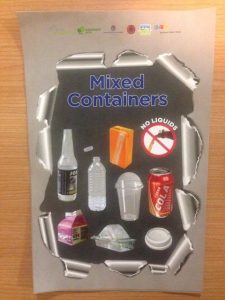
Mixed Container Decal
What? (Moment of Significant Change Workshop)
In tutorial last week, we reflected on our knowledge levels, skill levels, and emotions and how they have changed throughout the term. Read below to find out what each graph means to us!
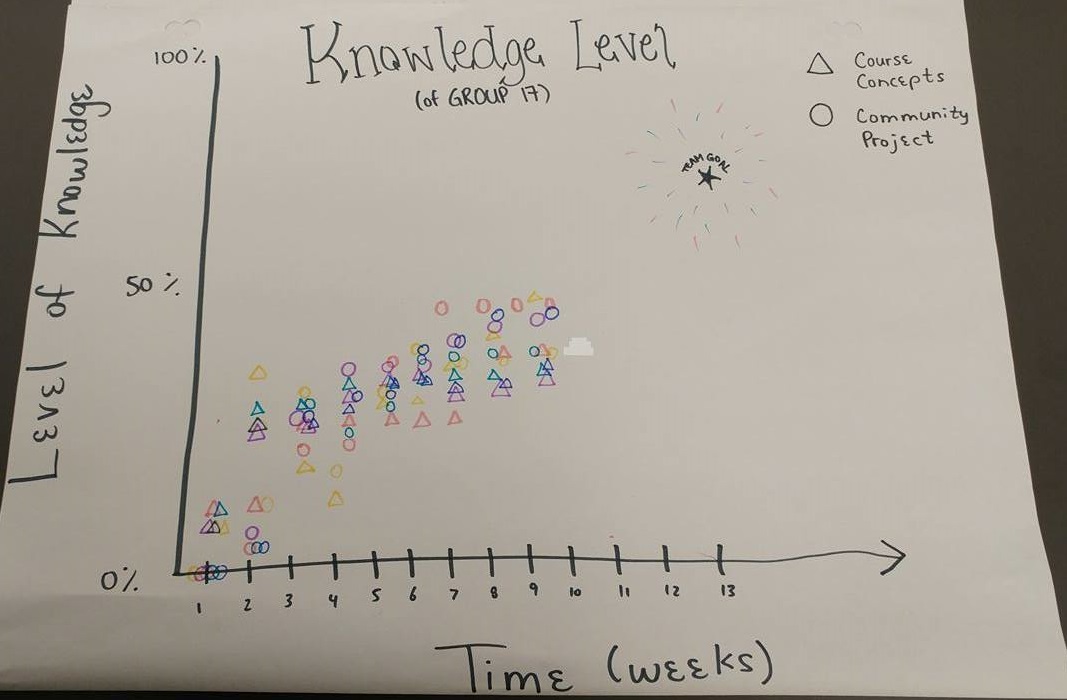
Figure 1. This figure illustrates how our level of knowledge has evolved over time this term.
Our knowledge level graph measures our group’s level of knowledge regarding our community project (circles) and LFS 350 course concepts (triangles). Each colour indicates a different group member and the star at week 13 reflects where our group aims to be at the end of the term.
As pictured above, our team’s general knowledge trend has increased over the past 9 weeks (as we would hope!). Initially, we began the term with 0% knowledge about our community project, because we had not yet chosen our projects. By week 2, we had been assigned to the Put Waste in its Place project, and after reading the course website, we gained preliminary insight and understanding into the project purpose and goals. We had a significant increase in knowledge following week 3, when we attended our first meeting with our community partners and were provided with a clearer vision of the project. At the meeting, we gained further understanding into the background context of the project in terms of the City of Vancouver’s Zero Waste initiatives as well as the specific tasks (e.g. putting up new decals and conducting naturalistic observations) and expectations of us. From week 4 onwards, our knowledge continued to expand each time we visited our community center to conduct the observations/interviews and as we met with our community partners a second time. Currently, we are generally at the 50% level since we still have further observations to conduct and final results to conclude. We are looking forward to seeing the final impacts of our project after we complete our final report, and all data is analyzed and compared.
The second aspect that our graph measures is our group’s knowledge of the main LFS 350 course concepts – including: food security, food justice, food sovereignty, and ABCD. All of our group members started off with some basic background knowledge (corresponding to approximately 10% on the graph) on these concepts from our learning in LFS 250 and other experiences. The majority of our group indicated that their understanding of these concepts greatly increased after week 2, which is when we spent our lecture time defining and discussing these topics. From week 2 onward, our knowledge of these topics has continued to increase as we delved more into these matters in class and completed our required readings/videos/podcasts. The additional resources were related to course topics thus, further enhanced our understanding.
One podcast from last week really stuck out to us: This American Life – Poultry Slam 2011: Act 3: Latin Liver (2011). The chef failing to make delicious foie gras because the method used in Europe did not work in New York reminded me of the importance of making changes that fit the context/community you are in. Instead of just taking an idea that works for other municipalities’ waste bins, the City of Vancouver is testing out the decals in Roundhouse community center first, before spending a lot of time and money. If they were to use decals from other waste bins in another city, they may not necessarily work for the context of Vancouver. Going back to the graph, it would be impossible for us to fully understand LFS 350 course concepts, since some people spend a lifetime studying them, we aim to have a much stronger grasp on these challenging topics by the end of the semester!
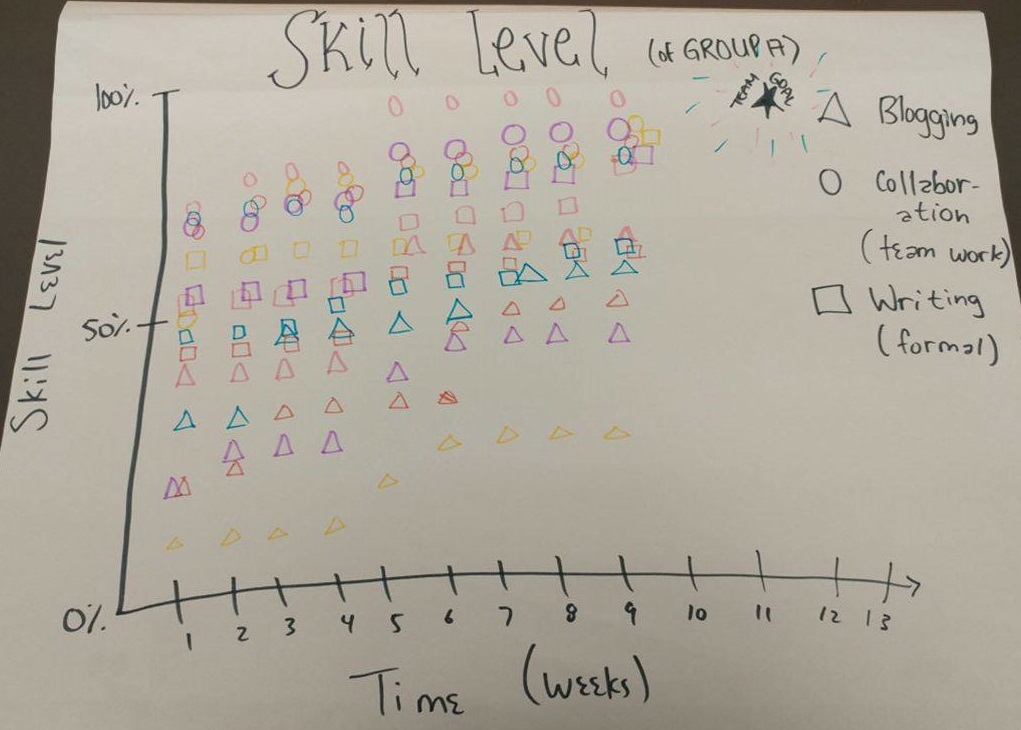
Figure 2. This figure illustrates how our skill level and has evolved over time this term.
Our skills graph measures our group members’ skills in three different subtopics – formal writing, blogging, and collaboration.
FORMAL WRITING: As for our writing skills, all the group members had around a 50% skill level at the beginning of the course as we all had previous formal writing experience. This level remained constant for all group members until our project started and we composed our official project proposal. There was a significant increase in our formal writing skills at week 5 when we were writing the project proposal together. During the same week, we took our proposal draft to our tutorial session and our TA gave us constructive feedback to make further improvements. Since the final version of our project proposal was completed, we have not finished any other formal writing assignments and therefore, our writing skills have remained stagnant.
BLOGGING: None of our group members started off as professional or personal bloggers so for the most part, we all had a limited idea of how the process worked. We worked on our first blog post between weeks 2 and 3 and with the help of our TA’s initial feedback, we started to gain better insight on how the writing should be styled and formatted. Being used to academic writing, we had initially written the post in a rather concise and to-the-point manner. We now know the blog posts are meant to be engaging, reflective, and insightful so our community partners can be up to date with our team’s efforts and thoughts. Having completed our second blog post and receiving positive feedback from it, we are now going into our third blog post feeling much more comfortable with this kind of writing
COLLABORATION: Our group’s trend for collaboration follows a very clear pattern: as the weeks go by, we’re getting stronger as a team. Initially, we started at a high level of collaboration since we had all experienced group-based work/courses before (such as LFS 250) and had a general idea of what to expect this term. From the start we have gotten along easily, often being vocal with our ideas and suggestions, but never overpowering one another. We were also able to connect on Facebook for instant group communication and via Google Docs to easily work on assignments together. Throughout the term, we have developed stronger ties to one another and as such, our team can interact and work together efficiently and positively.
Our team goal for all three major skills optimistically sits right below the 100% level. We want to continue developing these skills as individuals and as a group to bring forth in future academic and professional works; however, since we are also aware there is always room for improvement and growth, we didn’t want to unrealistically say our team goal is to reach 100% in any of these skills.
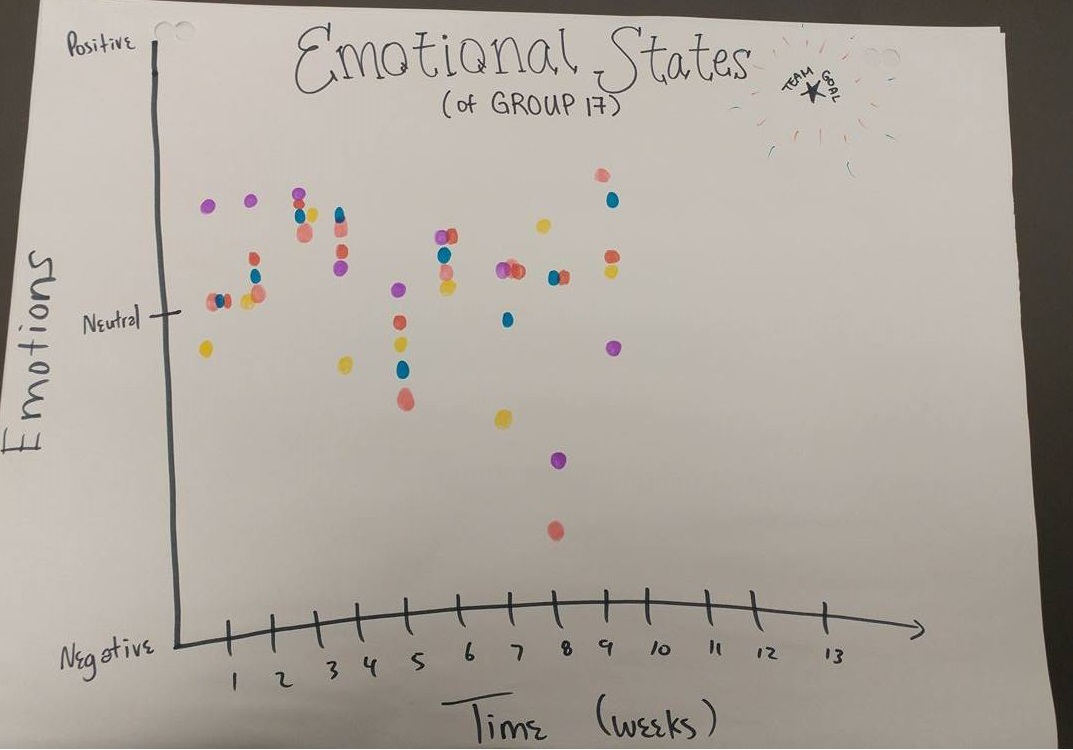
Figure 3. This figure illustrates our emotions and how they have evolved over time this term.
The individual emotional states of our group members were graphed using the time in weeks vs. our emotional state measured on a general scale from negative to positive. This graph reveals, as would be expected, a wide variation in our emotional states over the past nine weeks. Although we tried to focus on the fluctuation of our emotional state in terms of LFS 350, it was very difficult to differentiate all of the unique factors in our lives that play into our emotional status. Therefore, our indicated emotional states in each week may also reflect other unrelated aspects of our lives (e.g. other course work or life struggles/success). However, there are still some general common trends which can be seen throughout our group that can be attributed to our LFS 350 experiences. In week 5, all members except one experienced a significant drop in positivity which correlates to the week that we received our project proposal feedback. We were all confused and frustrated after receiving our feedback because we thought we had clearly expressed our ideas and had a good understanding of our project. This forced us to reflect on our proposal and made us very aware of the importance of our word choices when communicating our ideas. However, in week 6 we met with our community partners for a second time and they were very pleased with the observations and work we had done to date. This response was reassuring and encouraged us to continue moving forward with confidence. This is reflected in the graph by a significant increase in our positivity. We hope to end the term on a positive note, knowing our project either made a significant difference in the community or that the data we collected was meaningful to our community partners for future efforts.
So what?
Upon reflection of the term so far, we have realized how much we have grown but also how far we have yet to come. Self and team reflection is important because without it, we would just go through the whole term without thinking about our learning process and how LFS 350 has affected us.
In addition, we realized that our project loosely ties to the overarching theme of ethnicity in the food system in the “Parallel Alternatives” article (Gibb and Wittman, 2013) we discussed in class. The community centre setting in which our project took place is very diverse and has given us the opportunity to interact with a variety of individuals. This has allowed us to gather insight from a large representation of Vancouver’s population, including multiple cultures and backgrounds. Gibb and Wittman (2013) claim diversity plays an intricate role in the food system, which has historically created a separate (but parallel) network. However, in our project we consider all community center users as one community and ethnic background is not a defining factor in our research.
Now what? (The Graceful Dismount)
In the coming week, we will conduct our final observations and interviews at Roundhouse Community Centre to see whether or not the addition of the new decals will affect community members’ waste sorting behaviour.
Upon completion of our data collection, we will use the interviews as descriptive statistics, to determine the positive (appreciation) and negative (concerns & issues) feedback from the community users on waste sorting, and report this feedback to our community partner via Hubbub (an event described below).
The following statistical analysis will be performed on quantitative data:
- correctly vs. incorrectly sorted percentage within and between each age group
- correctly sorting rate before and after the introduction of new decals
On November 30, a public presentation with infographics of our whole project will be displayed at The Nest and as a group, we will present our findings and engage with a UBC-based audience.
On December 2, we will collaborate with Group 18, who is also working on the ‘Put Waste in its Place’ project, and participate in Hubbub#7, a project showcase event hosted by City Studio Vancouver. We hope that our project can provide valid data on the current waste bin signage system and furthermore, provide new perspectives and insights on the current state of community waste diversion, and attitudes toward the city’s food waste bins.
And finally, on December 4, we will submit our final project report to wrap up the term. This report will require us to relay our results and final conclusions in a fairly concise manner due to the limited word count. It is therefore crucial that prior to writing the report, we discuss as a group how the results from all three rounds of observations compare, and present the findings most relevant to our project’s objective: did the new decals affect waste diversion at Roundhouse Community Centre?
The following are some things that we did not get a chance to but would like to have investigated:
1.What are the confounding factors that might affect the results?
- Geographic region of the specific community centre (Yaletown)
- Background/composition of community centre users
- Small sample size or short observation period
- Unequal sample sizes (round 2 < round 1)
- Observation period was only one hour
- Did we really use the best methods possible? Some limitations to our approach were…
- Very limited number of interviews conducted (~3 per visit)
- Doing face to face interview vs. online anonymous questionnaires
- Similar demographics of interviewees (majority were female, middle-aged)
- As a team, we’ve continuously acknowledged our achievements and thoroughly gone over areas needing improvement to stay on top of this project. We believe staying positive and looking forward will really push us to finish the term and the final project off strong! In addition, as full time students from a range of LFS programs, it’s important we are understanding and supportive of each other people’s situations and schedules that have often conflicted with meeting up. Connecting intellectually is one thing, but being able to willingly fill in the gaps of another group member when necessary has definitely made our work environment warmer and more cohesive. As we approach the final weeks of LFS 350 and our other academic courses begin to pile up to the grand finale(s), we hope to start our infographic and presentation materials soon so there’s plenty of time to prepare for our final presentation and Hubbub.
References
Gibb, N., & Wittman, H. (2013). Parallel alternatives: Chinese-canadian farmers and the metro vancouver local food movement. Local Environment, 18(1), 1-19. doi:10.1080/13549839.2012.714763
This American Life (2011). 452:Poultry slam 2011. Podcast retrieved from https://www.thisamericanlife.org/radio-archives/episode/452/poultry-slam-2011?act=3#play